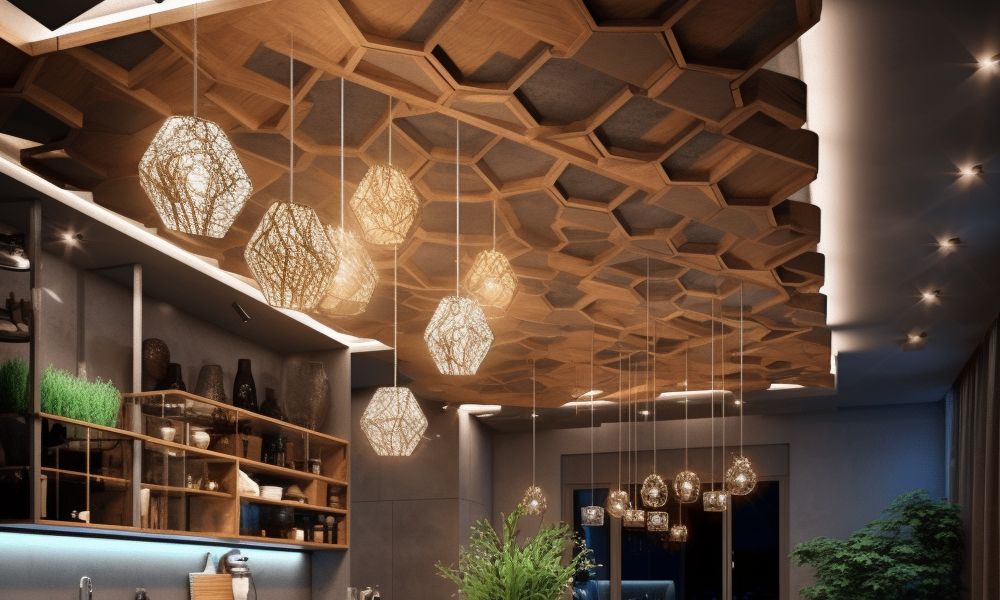Lighting is a fundamental aspect of interior design that has the power to transform the ambiance and functionality of a space. From creating a warm and inviting atmosphere to enhancing productivity and functionality, lighting plays a vital role in setting the mood and enhancing the overall aesthetics of your home. In this blog post, we will explore the power of lighting and provide tips on how to effectively illuminate your space for both ambiance and functionality. Let’s dive into the world of lighting and discover how it can elevate your home.
1. Understand Different Lighting Types:
There are three primary types of lighting: ambient, task, and accent lighting. Ambient lighting provides overall illumination to a space and sets the general mood. Task lighting focuses on specific areas where specific tasks are performed, such as reading or cooking. Accent lighting adds drama and highlights specific features or objects in a room. Understanding these different lighting types will help you create a well-balanced lighting scheme.
2. Layer Your Lighting:
To create a dynamic and visually appealing space, layering your lighting is key. Combine different lighting types to achieve the desired ambiance and functionality. Use a combination of ceiling fixtures, floor lamps, table lamps, and wall sconces to provide varying levels of illumination and to create depth and dimension in your space.
3. Consider Natural Light:
Maximize natural light in your space as it provides numerous benefits. Position furniture and arrange your space to make the most of natural light sources, such as windows and skylights. Natural light not only illuminates your space but also promotes a sense of well-being and connection to the outdoors.
4. Choose Appropriate Bulbs:
The type of bulbs you choose can significantly impact the ambiance and functionality of your space. Opt for warm-toned bulbs, such as incandescent or warm LED bulbs, for a cozy and inviting ambiance. Choose cooler-toned bulbs, like daylight or cool LED bulbs, for task-oriented areas where you need brighter and more focused light.
5. Dimmers for Flexibility:
Installing dimmer switches allows you to adjust the intensity of light to create the desired ambiance. Dimmers provide flexibility and control over the lighting in different areas of your home. They allow you to transition from bright and functional lighting for tasks to a softer and more relaxing atmosphere for entertaining or winding down.
6. Highlight Architectural Features:
Use lighting to accentuate the architectural features and focal points in your space. Direct light towards a beautiful fireplace, a stunning piece of artwork, or an architectural detail like an exposed brick wall. This not only adds visual interest but also creates a sense of depth and drama in the room.
7. Create Zones with Lighting:
Consider the different activities that take place in each area of your home and create lighting zones accordingly. In the kitchen, focus on task lighting for food preparation areas and ambient lighting for dining spaces. In the living room, layer ambient and accent lighting for entertaining and relaxation. By creating lighting zones, you ensure that each area is appropriately illuminated for its intended purpose.
8. Balance Lighting Fixtures with Décor:
Select lighting fixtures that complement your overall décor style. Lighting fixtures can act as decorative elements themselves, adding visual interest and personality to your space. Choose fixtures that harmonize with the style and theme of your home, whether it’s sleek and modern, vintage and eclectic, or minimalist and contemporary.
9. Incorporate Lighting Controls:
Make use of lighting controls to enhance convenience and energy efficiency. Consider installing smart lighting systems that allow you to control your lights remotely or through voice commands. Timer switches, motion sensors, and programmable lighting can help optimize energy usage and create a more efficient lighting scheme.
10. Regular Maintenance:
Keep your lighting fixtures clean and well-maintained to ensure optimal performance. Dust and clean bulbs, shades, and fixtures regularly to prevent dirt and debris from affecting the quality of light. Replace bulbs as needed to maintain consistent illumination throughout your space.
Lighting is a powerful tool that can transform the ambiance and functionality of your space. By understanding different lighting types, layering your lighting, considering natural light, and choosing appropriate bulbs, you can create a well-balanced and inviting environment. Highlight architectural features, create lighting zones, and select fixtures that complement your décor to add personality and visual interest. Embrace lighting controls and prioritize regular maintenance to optimize energy usage and keep your lighting scheme in top shape. With careful consideration and attention to lighting, you can illuminate your space to create a welcoming, functional, and aesthetically pleasing home.




